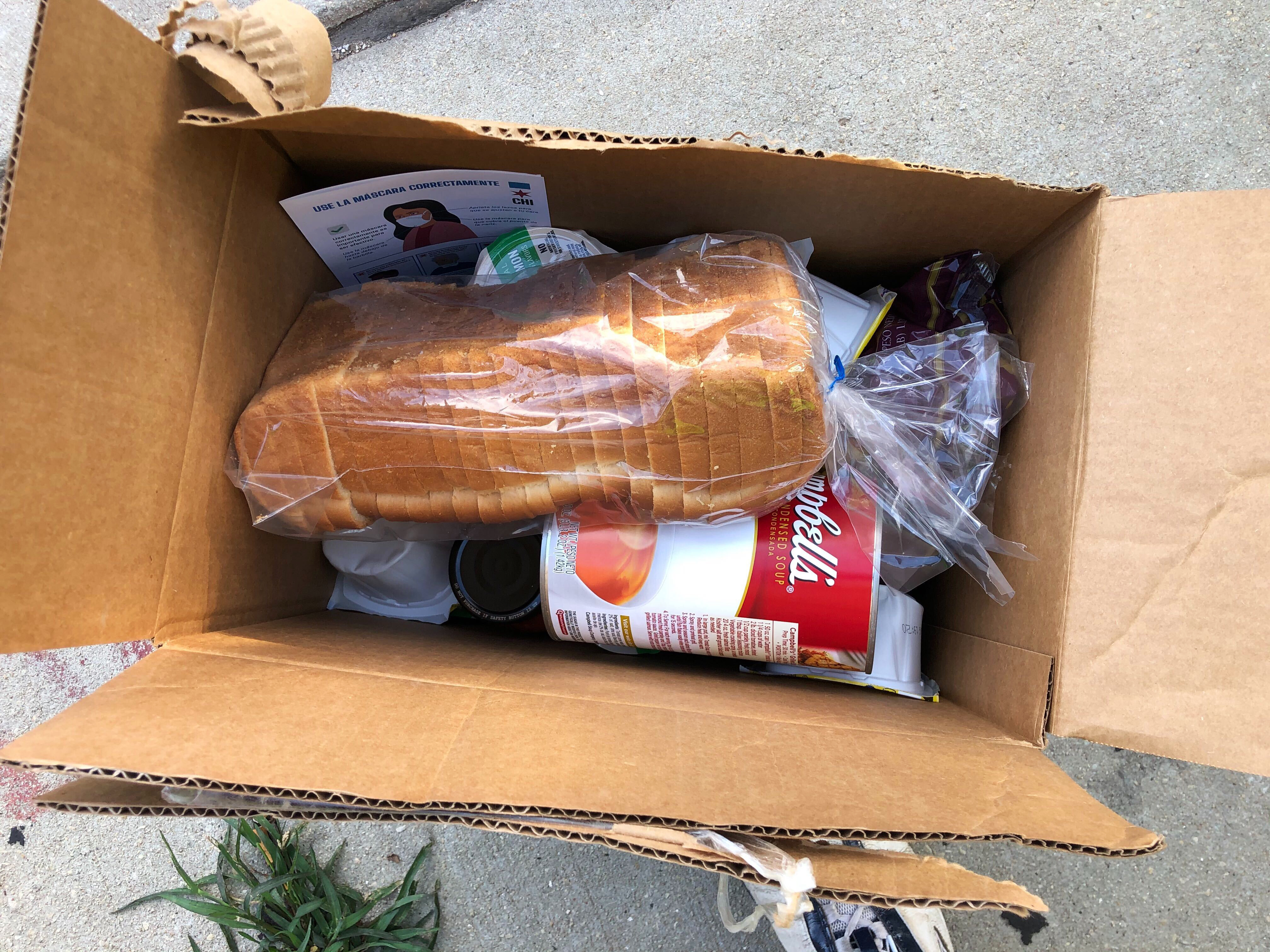Despite A Spike In Shootings, Chicago’s Anti-Violence Workers Remain Resilient
By Patrick Smith

Despite A Spike In Shootings, Chicago’s Anti-Violence Workers Remain Resilient
By Patrick SmithOn a recent Friday evening, a group of anti-violence workers passed out boxes of dry goods at a corner in West Humboldt Park.
The group, part of the Alliance of Local Service Organizations, or ALSO, hands out food in the Humboldt Park area a couple times a week, but they picked this corner at Chicago and Hamlin avenues for a very specific reason. Earlier in the day, two teenagers had been wounded in a shooting there.
ALSO’s Tony Raggs said they wanted to counteract the jarring moment of violence on a busy street with an act of goodwill and togetherness.
“It lets the community know that we’re bringing a sense of calm back to the community and making it a safe place again … and [trying] to defuse the situation at hand,” he said Raggs, the manager of ALSO’s Safe Streets program in Humboldt Park.
Raggs and the people below him are part of a loose-knit collection of about 200 street outreach workers operating throughout the city trying to prevent violence as Chicago suffers through an astounding increase in shootings. Between May 17 and July 19, there were 227 murders and 858 shootings, according to police data.
For some of the prevention workers, the violence has felled friends and loved ones. But they are resilient in the face of the bloodshed, expecting things to get better and working to prevent retaliation and escalation.
While they were handing out the boxes, about 50 in total with enough dry goods to last a family a few days, people came up to Raggs to tell him about the shooting, but he already knew all about it.


Raggs and a few other longtime anti-violence workers were out on this corner hours before.
Immediately after the shooting, people started calling to tell them what happened. Raggs lives only a few blocks away and headed over.
“We just try to gather as much information as we can to try to defuse it and make sure that another situation doesn’t happen behind that one,” Raggs said.
They quickly learned the shooting was part of a conflict between two groups. “Group A and group B,” is how outreach worker Frederick Wallace referred to the involved parties.
“We know who Group B is, and we’re still on top of Group A,” Wallace said.
He said they had been able to talk with both groups, trying to talk them out of retaliating or escalating the violence.
Wallace and Raggs are both in their 50s and are lifelong friends. Both grew up nearby.
Raggs said he used to be “one of the hurt people who hurt people.” He started to change into a positive force more than 30 years ago, after his sister was killed.
Now he is trying to reduce the violence in Humboldt Park, an area that like so many others has seen a major increase in shootings and murders this year, according to police data.

Wallace and Raggs said the violence is different now than when they were running the streets. It’s not based on drug territory. Shootings are not ordered by a high-ranking gang leader.
“It’s more disrespect and silly stuff [driving the violence],” Wallace said. “Facebook has a lot to do with all of the shootings.’You went on Facebook and said eff my damn homie.’”
ALSO outreach worker Cierra McGee said most of the people doing the shooting in Humboldt Park are “younger” but can range anywhere from “14 to 40.”
When asked what’s prompting them to pick up guns, McGee gave a list of reasons.
“For image, to prove a point, to make people think they’re somebody they’re not. Grudges, retaliation, just to be doing something,” McGee said.
Luis Rodriguez chimed in, saying the young people shooting are doing it “just to fit in.”
“They want to be cool,” Rodriguez said. “At the moment they want to be known, ‘Yeah I did this.’”
Still Rodriguez, like all of the ALSO workers interviewed, expressed optimism that they were getting through to people. And he talked up a recent week when they had zero shootings in their coverage area.
“We was living this life, but we’ve come to a realization where we changed our life, so our thing is to change their life,” Rodriguez said. “Basically we’re just giving them … a different view. Think outside of the box. You know there’s more to life than shooting a person.”
The ALSO workers agreed there are bigger, deeper issues driving the violence, like poverty, segregation, disinvestment and racism, but they don’t talk much about those root causes.
They are trying to prevent shootings on a day-by-day, hour-by-hour basis.
They also aren’t focusing on the negative. They all defined a successful night as one with no shootings.
But when there are shootings, they say they are undaunted. It just means they need to get back out there and get back to work.
Patrick Smith is a reporter on WBEZ’s Criminal Justice Desk. Follow him @pksmid. Email him at psmith@wbez.org.